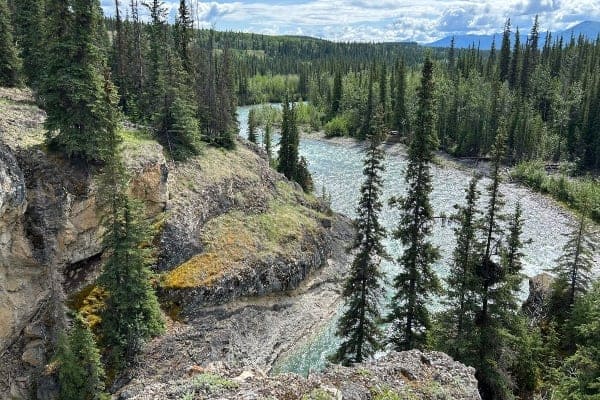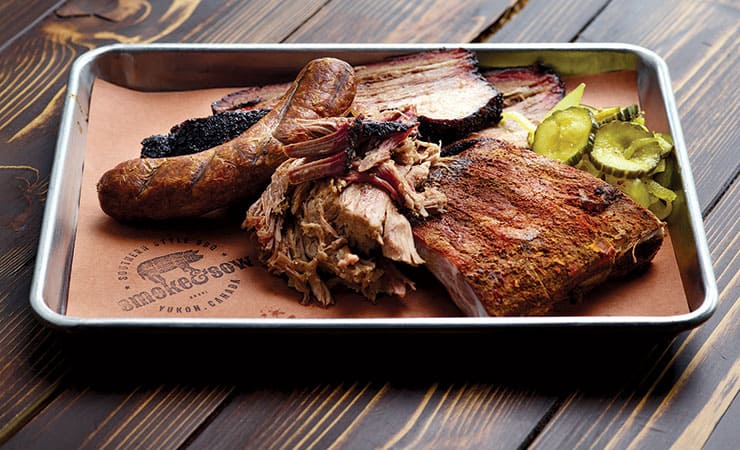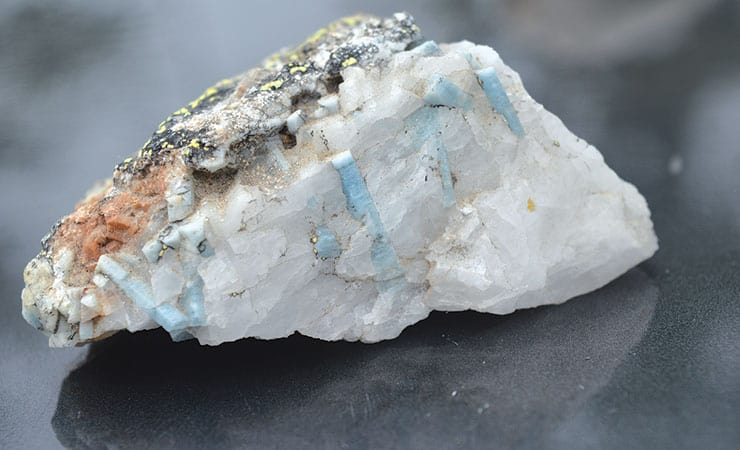But it still has a huge bug population.
Driving back to the Robert Campbell Highway, we headed down the now unpaved road into apocalyptic-looking storm clouds. Other travellers passed us, headed in the opposite direction, which was becoming a hallmark of the vacation; us driving into ominous landscapes while everyone else fled. The unsettling feelings passed when we pulled up to the campground 40 minutes later and found most of the sites were full.
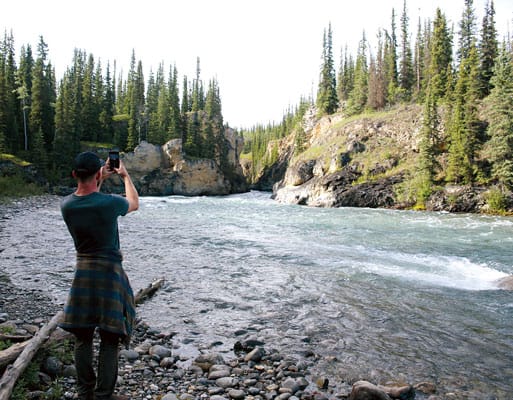
The downpour was finally passing and I suggested we check out the canyon before setting up our tent. Dousing ourselves again in bug spray, we took the trail next to our site to see what Lapie Canyon looked like. The trail was free of mushrooms, but was full of moss and asters. As we made our way to the end of the trail we walked up an outcrop and saw the huge opening of the canyon and the fast-flowing Lapie River below. The water had a green-blue hue to it, accented by several white rapids. On our right, the river stretched out wide and calmly nestled up against the rocky shore.
“I didn’t know water in the Yukon could look like this,” I said. I was used to the silt-filled Yukon River and the dark, freezing waters of the Klondike River.
With hikers and their dog on our tail, we detoured left and quickly walked through the narrow, wet, brushy trail. The further we walked, the better the view and the more my anxiety kicked in from standing close to the edge of the canyon. We walked all the way to the bridge that crosses the river on the highway and then decided to turn back, to set up our tent and start a fire to cook dinner. The bug spray didn’t have a long-lasting effect on these pests, so my embarrassing head net went on.
“You seem calmer,” Paul said. I wasn’t. I tucked my hands in the sleeves of my rain coat to spare them from the mosquitoes and nodded.
After eating dinner, preparing our lunch for the next day and writing a few postcards I found in the Faro Discovery Store, we called it a night and quickly changed into warm pajamas for the rainy night ahead of us.
The next morning, we walked out to the canyon again with some coffee, to look at the water one last time. We didn’t think we would be back, as we had more territory to explore.
Packing up our damp tent, we said goodbye to our campsite and took a detour to Ross River. Paul was interested in walking across the suspension bridge and I wanted to see the Pelly Barge cable ferry. To my surprise, the ferry had Dawson City written across it. I wondered if this was the same cable ferry that operated in Dawson City from 1902 and was dismantled in 1944. I quickly decided it couldn’t be the same ferry since the Pelly Barge looked like it was in decent shape. After some research, I found out the barge had been built in Vancouver in 1964 and then rebuilt in 1985, probably in Dawson City. And I learned the community names on the sides of boats have to do with where the vessel was initially registered.
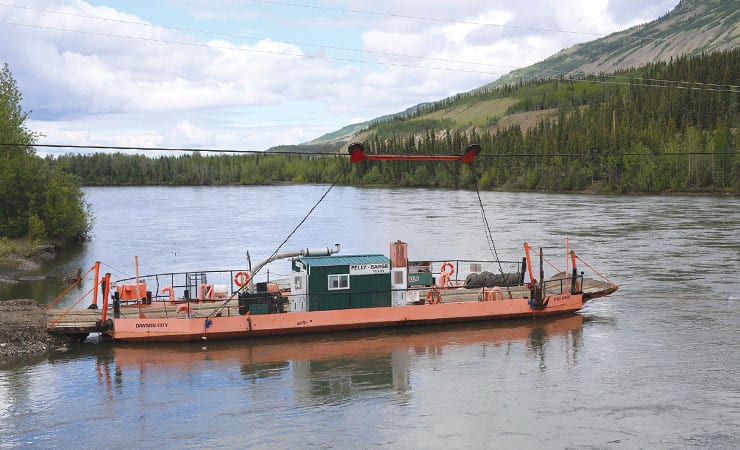
On our long drive back, Paul was keen to take “the other highway” that had been cryptically suggested by acquaintances. This was a narrow dirt road that wound for 53 kilometres between three campgrounds at Frenchman Lake, Nunatuk Campground and Tatchun Lake. Dense, old spruce trees and poplar lined the highway.
Pulling into the empty Tatchun Lake Campground, I noticed there were no COVID-19 signs posted anywhere. Nothing on, or inside the outhouses where they’d been displayed at other sites. The campground was eerily deserted. I couldn’t help but feel like we were unexpected guests.
Paul took his fishing rod down to the dock and I hauled out supplies to make coffee to fuel the last four hours of our drive. The forecast looked dismal. Charcoal clouds inched closer and wind blew out my matches as I tried to light my stove. While waiting for the water to slowly roll to a boil, I watched a squirrel make its way up to the picnic table, bypass me and scramble into a spruce tree. It had made a nest in some branch dieback from an infection on the lowest limb of the tree. The squirrel was chewing on a large twig and stuffing it into its lodge, adding more support for the rain storm we were about to have.
I walked our coffees down to the dock and asked Paul if I could cast a line in the water. I don’t fish, so I listened to his instructions and cast the line twice. Feeling more confident on the third cast, I flung the rod in the direction of the lake and nearly caught him in the chest. The hook bounced off his shirt as he tried to dodge it.
We decided to pack everything up just in time to miss another downpour.
While taking over my share of the driving, I reflected on how grateful I felt to have a change of scenery and a small break. Weather, nature and life in the wild (mosquitoes included) continues to carry on, untouched by COVID.

